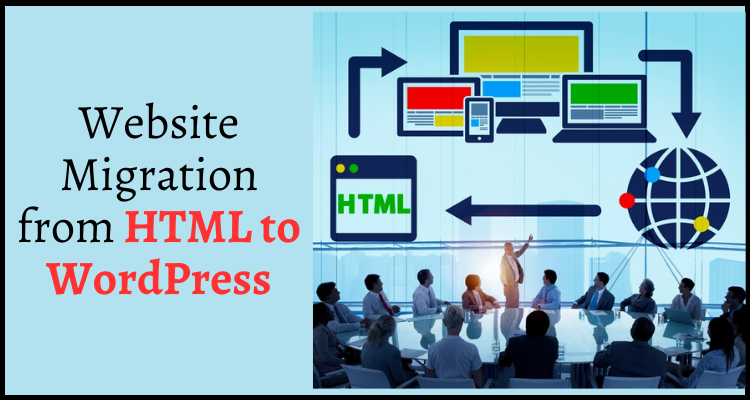- 1-905-452-8193
- Contact Us
- Member Login
- Get Listed Today
- 220,911 members

Your business website is the foremost thing users notice nowadays. They decide whether to stay and scroll through the information or leave it immediately. The speed at which your website loads and displays information plays a vital role in this aspect, and surprisingly, you have 50 milliseconds to make an impact. Here, the role of CMS and other technologies matters the most.
WordPress, among various CMSs, vies in this aspect with overcrowded users. However, the problem of speed and ease of use can be solved with static HTML-based code. A static file can load faster and provide ease of use. This is where translating your static code to HTML comes into play.
However, the HTML to WordPress conversion process is intricate and requires domain expertise for a professional touch. The ideal way is to get assistance from a skilled service provider or follow some helpful steps.
The process of migration indeed requires time, effort, and energy. If you decide to complete it independently, you must follow some helpful steps. These might be simple to intricate. Hence, it is advisable to follow every step precisely and cross-check to see if it works. Below are the outlined steps:
This is the first and foremost step in the HTML to WordPress migration process. You should take the backup of all your HTML files and databases. Backing up is crucial as it states that you have a safety net. This means if anything goes wrong with the process, you still have a substitute file on which you can work and complete the migration.
Now that you have backed up your static files and database installing WordPress is next. Install WordPress on your hosting server. If you haven't already, you don’t have to worry. You can do this manually or use a one-click installer provided by your hosting provider.
After installing it, start looking for a theme that matches your static file's design. You can find free to premium options for this. Choose one that relates to what you have designed. This is because it will help you perform only the required changes. Simply put, you do not have to mold or write the code from scratch to match the theme’s look with what you have crafted.
This is the stage where actual work starts. It involves breaking down your HTML files and converting them into a WordPress theme structure. You have to follow several steps like:
Creating text files that include all sections and stylesheets, too
After that, copy the CSS code of your static file and paste it into the stylesheet of WordPress
Separate existing HTML and include yours
Integrate JavaScript code. Remember you have to adjust the paths and file reference accordingly
Replace the PHP code (header and index) with what you have created
For better identification of your code, just mark the codes (header, footer, and body) with comments
These are steps you must follow in this process if you are performing it manually. However, you can get assistance from an HTML to WordPress conversion service provider.
Now, import your content and export it to WordPress. Simply put, copy the content of your HTML pages and paste it into your WordPress pages. Remember to maintain the formatting and structure of your content as precisely as possible. After that, you can set permalinks to support SEO and include the required plugins (like security, caching, or SEO plugins) that are vital in this process.
Your migrated website might be facing any issues. These might be related to any aspect, whether functionality or plugin error. Hence, testing your migrated website plays a crucial role in smooth performance. Once you have completed the process, do not forget to check again to see if it's working. Thoroughly test every section of your site and debug the issues if they prevail. Only when you are satisfied with the migration and testing you can launch your site. To understand if it works properly, monitor the performance and find areas for improvement.
This blog covers all the major steps in migrating your static code to WordPress. Remember that a small mistake can cost you all your efforts. When you convert HTML to WordPress theme, the vitality of conversion holds the utmost value. Getting assistance from a skilled service provider can help you solve this complex puzzle if you face any difficulty during the process. With precision and expertise, you can migrate your HTML site to WordPress.
